Not Your Dad's Camry: The 2015 Toyota Camry XSE V6, Reviewed
For years, the Toyota Camry has been a great selling car, and it's easy to see why. A large family sedan with good fuel economy, large trunk space and a selection of trims at a reasonable price appealed to many, hence its popularity. This tried and true formula is successful today, but it creates a problem. The sporty car buyer will most likely not look at a Camry as a car purchase, if ever.
At this point you might say, “But wait! The Camry SE has existed for many years!” Yes it has, but it has been rather underwhelming towards the true enthusiast market. What I was looking for was something along the lines of the Toyota Camry TS-01 concept or the Toyota Aurion TRD. In spite of this, 45 percent of Camry buyers opt for the SE trim, a staggeringly large and impressive number.
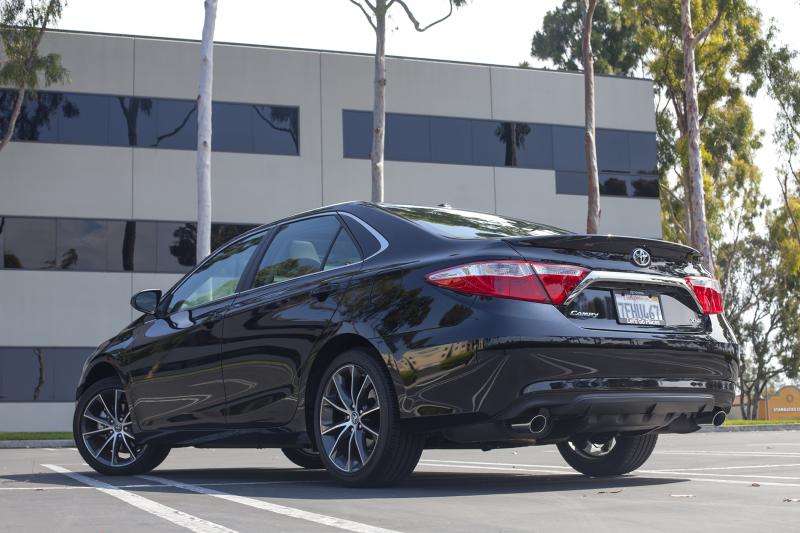
To address the problem, Toyota took their sporty Camry SE and cranked up the ante. Unlike the Corolla S that I tested back in February, you are not stuck with the standard engine. The Camry XSE is available with a 3.5L V6 that produces 268 horsepower and 248 lb-ft of torque. That’s nearly twice the cubic capacity and horsepower output of the Corolla’s engine. The XSE trim also adds bigger 18 inch alloy wheels, upgraded suspension featuring coil springs with a higher rate, firmer bushings and XSE-specific shock absorbers. The power steering and transmission are both tuned to fit the sporty nature, with the latter featuring sharper shifts in “S” mode and will blip the throttle during downshifts.
SEE ALSO: 2015 Toyota Corolla S, Reviewed
While the XSE trim is new for 2015, the V6 option is not; in fact, a V6 has been offered since 1988. As a result the V6 gets worse MPG, costs $5,840 more and weighs more than the 4 cylinder, it’s not a very popular choice among most Camry buyers. In the case of the XSE, I’d made sure that the V6 is selected to insure maximum performance.
On the outside, the XSE features projector beam halogen headlamps with black sport trim bezels, a smoked chrome upper grille and a sport mesh front grille, color keyed rear spoiler, chrome tipped exhaust and daytime running lights (DRLs). Quite frankly, the XSE looks like a large Corolla with a face transplant from a Focus ST. Inside, the XSE features an interior clad in black leather and Toyota’s UltraSuede with red stitching. Power-adjustable sport bucket seats with large, snug bolsters sit in the front along with a leather-trimmed 3 spoke steering wheel complete with paddle shifters. The result of all these changes is a Camry that doesn’t resemble the Camry that your mother or father would have sitting in the driveway. Toyota states that the XSE offers sharper handling than the SE; could this be the ultimate driver’s Camry?
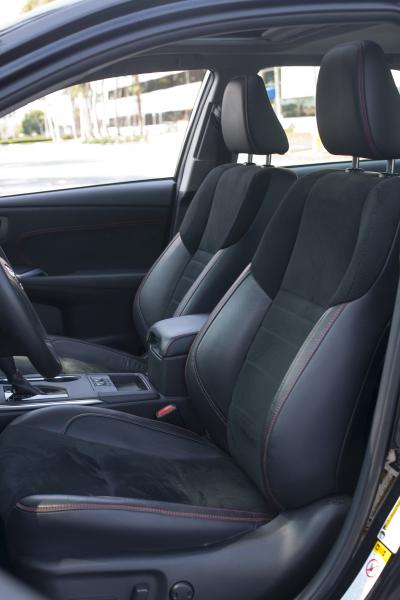
Naysayers may shake their heads, stating that the car is “Just a Camry” underneath. However, there are many performance cars available today which are all based off cars you’d see joe schmoe driving. The Subaru Impreza WRX, Ford Focus ST, Ford Fiesta ST, Volkswagen Golf GTI are just a few notable examples. These cars are all excellent performers; practical while still being able to put a massive smile on your face. The question here is, can the Camry XSE do the same?
Stomp down on the go pedal and V6’s torque will spin the tires in first and second gear, producing a sound reminiscent of a muffled E46 M3 from the engine. The car flied through gears unusually quickly, as if it was fitted with a short gear kit. The gearbox itself felt strange, as if it was trying to be both economical and performance-oriented at the same time. Some manually executed gearshifts I couldn’t feel, making it feel like a CVT. Still, the powertrain provided acceleration that would push you into the seat and put a grin on your face when you buried it. When your foot is buried in the loud pedal the V6 eats through gasoline and a quarter tank can easily disappear in about 20 minutes.
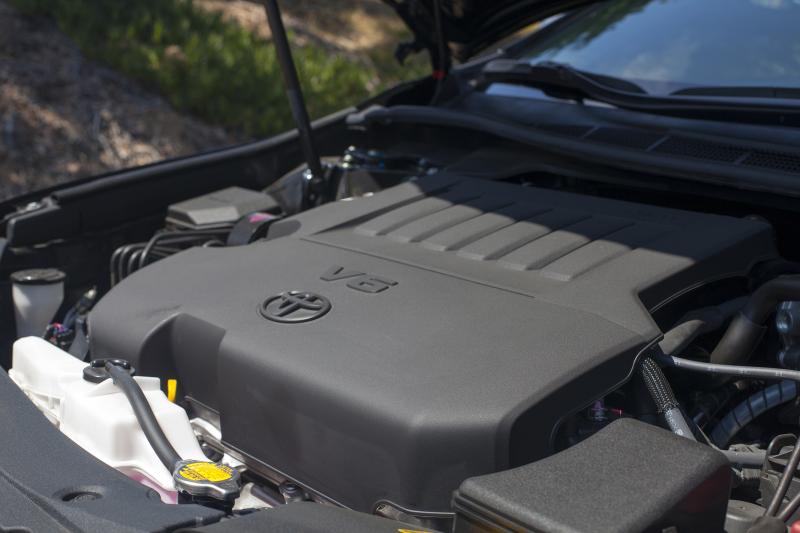
The wind and road noise is well controlled at speed below 70 mph, but once you hit speed in excess of 85 mph, the wind and road noise are all-consuming factors. Amazingly, at 80 mph in 6th gear the Camry rotates at just a hair over 2,000 RPM. The V6’s abundance of torque means the engine can easily build speed even on the highway- just put your foot down and you’ll be able overtake in seconds. The bad side of the torque is that it generates a large amount of torque steer if you're too enthusiastic while accelerating.
Sure, the car is pretty quick in a straight line. Real roads however have curves, so cars that are simply fast in a straight line aren’t very good if you end up biffing it in a bend. If the XSE’s suspension upgrades had you excited about handling, you’ll be excited to learn that the suspension upgrades have do a good job for a sporty driving. On the other hand, you’ll be disappointed to learn that despite having good suspension, the XSE doesn’t handle very well.
The XSE’s suspension is noticeably firmer than the Corolla S yet the changes hardly affect ride comfort. The XSE also rolls significantly less in the bends than the Corolla S, but it’s not as composed as I had hoped. In day-to-day driving and on the highway the XSE’s suspension is stiff enough to keep the car composed, yet soft enough to not send every road imperfection directly into your spine. All in all, the suspension checks out.

Unlike the Tesla Model S I tested, the Camry is not very good at hiding its size. In fact, the size of the car never goes away while turning, parking, or changing lanes; you are constantly aware that you are driving a big family sedan. Drive fast in the bends and this becomes an all-true fact. Couple this with the all season tires and you end up with a car with wayward handling characteristics which removes any sort of driver confidence.
The XSE lacks a sport button, which to many may seem irrelevant; however in Toyota’s case their sport buttons increase the weight of the steering to allow for greater precision in the corners. Although Toyota claims the steering has been tuned for the XSE, the steering is overly light and has a dull feel. This coupled with the fact that the camry isn’t good at hiding its large size makes carving up mountain roads a chore, rather than being fun. The Corolla S and RAV4 both come equipped with sport buttons, which makes me wonder why one wasn’t fitted to the XSE. I constantly found myself second guessing my steering input in corners thanks to the vague steering.
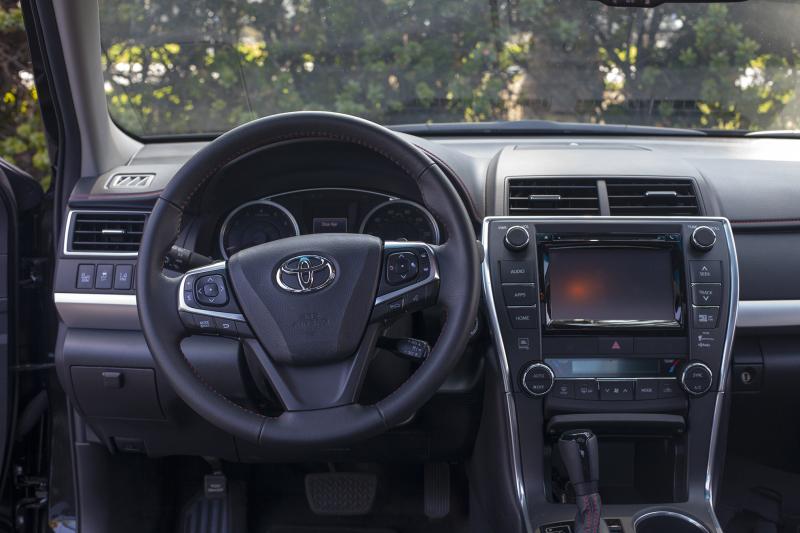
The final nail in the coffin is something that can be remedied yourself: tires. The Bridgestone Turanza EL400 tires that were fitted on my test car are easily some of the worst tires I’ve ever used performance wise. During the performance test, the tires constantly squealed and chirped under heavy braking, hard acceleration and hard cornering. The tests made it obvious that the Turanzas, which are designed for fuel efficiency and ride comfort are the exact opposite of what you want for a car like this. If equipped with true performance tires (especially on the V6 model), the XSE could be somewhat competitive to other performance cars on the market.
After performance testing was over, I dug into the spec sheet and discovered that not much had been changed on the XSE over the standard model. The transmission’s gear ratios on the V6 were exactly the same as the 4 cylinder’s; the only difference being differential ratios- The V6’s being 0.176 shorter than the 4 cylinder’s. This is somewhat clever as the ratios from the 4 cylinder technically would be a short gear kit on the V6, but it’s also not something I would expect from Toyota either. The steering ratio and turns lock to lock is also exactly the same as on the standard model, as were the brakes. Front stabilizer sizes were shared with the XLE, and the XSE’s rear stabilizer was only 0.1 inch bigger than the XLE’s.
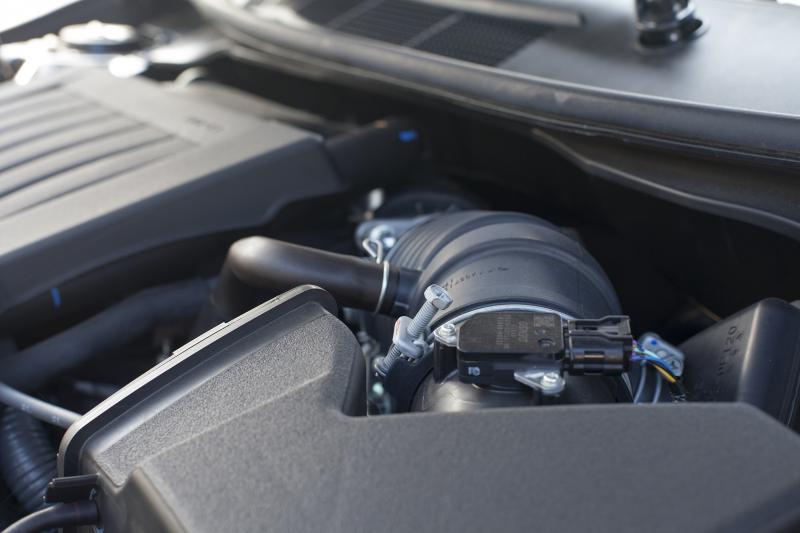
The sad part is that I know that this isn’t Toyota at its best. The Scion FR-S and Lexus RC-F which are both being produced by Toyota right now are prime examples of what Toyota is capable of doing. The FR-S TRD which I tested back in April scored three A’s and as of the day I’m writing this review, earned the only A+ in any given category. Looking back through history, cars such as the Celica, MR2, AE86 are all evidence that Toyota knows how to make a good performance car. It’s like they hardly tried with the XSE which is what disappoints me.
Performancewise, the XSE is a huge letdown. Let’s not forget though, that at the end of the day the car is still a Camry, and that’s a good thing. You get a cavernous trunk, seating for five, excellent visibility and a relatively stress-free driving experience. It’s also quiet and comfortable, and the interior is well finished. The XSE can be equipped with some great toys such as lane departure warning, radar cruise control, blind spot detection and Qi wireless phone charging, and the optional packages are relatively inexpensive.
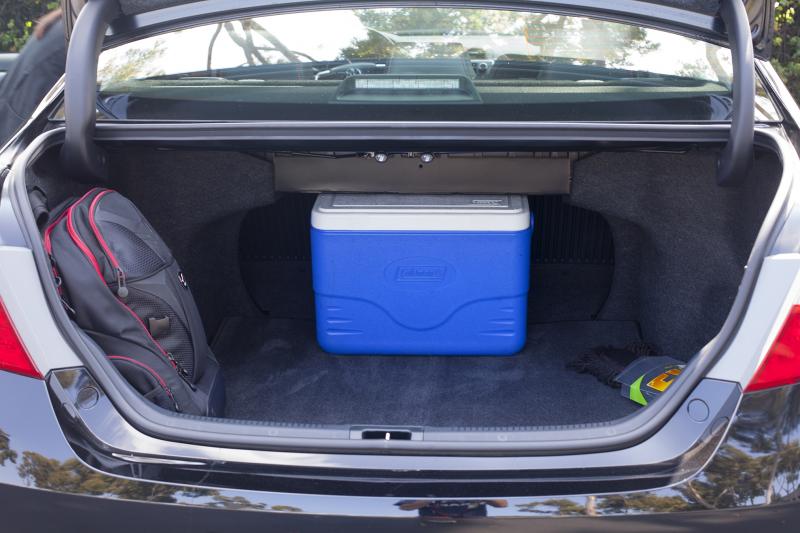
You can definitely tell that this car isn’t an ordinary Camry inside and out. The Camry XSE is a very good effort, but it ultimately falls short of expectations. With grippier tires, a revised transmission and a sport button, the car could be a true sports sedan. Regardless of these shortcomings, the Camry as a car is excellent. As a real performance car, it falls flat on its face. If you’re still looking for a performance sedan from Toyota, keep an eye out for the upcoming Lexus GS-F.
Overall score: A-
Hot Cars under $40,000 score: C-
Front Wheel Drive Performance Score: C-
Price as Tested: $34,475
At-A-Glance Specifications:
Engine: 3.5L DOHC 24-valve V6 with VVT-i
Horsepower: 268 @ 6,200 rpm
Torque: 248 lb-ft @ 4,700 rpm
Transmission: 6-speed ECT-i automatic
Tire Size: P225/45R18
Tire: Bridgestone Turanza EL400
Curb Weight: 3,480
Weight Distribution F/R: N/A
Cargo Volume: 15.4 cu ft.
Our Combined MPG: 22.4
Fuel Capacity: 17 gal
MPG (EPA Estimated)(City/Highway/Combined): 21/31/25
Video by Amou “Joe” Seto and Melody Jiang.
Reach Staff Reporter Amou (Joe) Seto here. Follow him on Twitter here.



